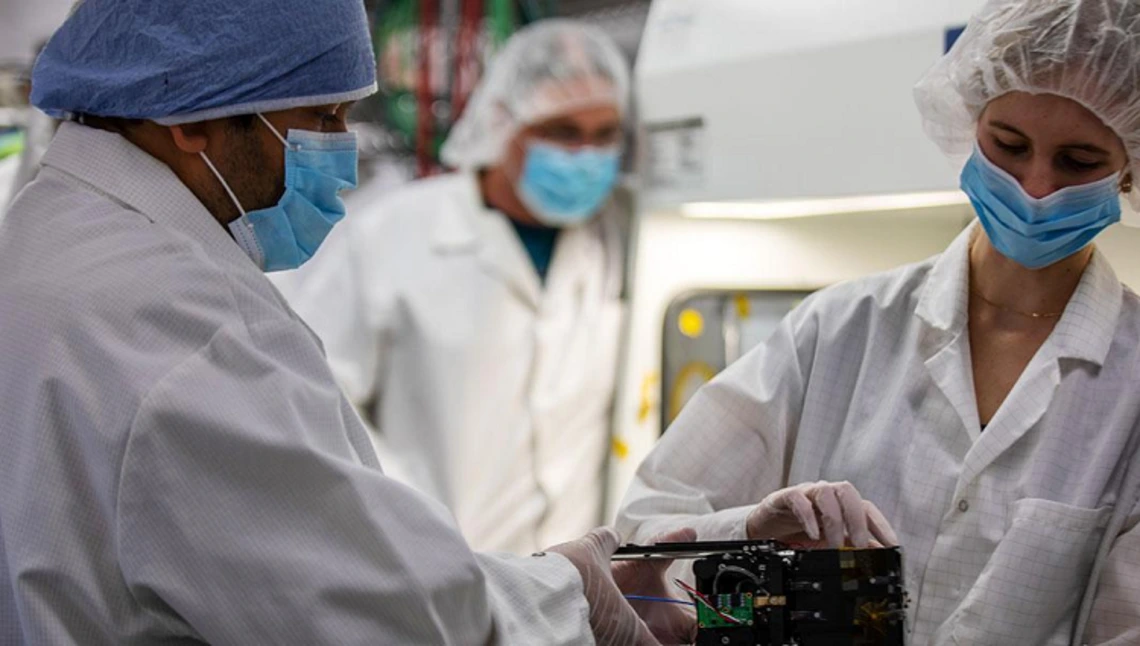AME Students Launching Satellite with 'Inflatable Antenna' Into Space

A team of University of Arizona students are working to better understand our atmosphere with a device smaller than a microwave. Their CatSat, a miniature satellite, is planned to probe the ionosphere – where Earth's atmosphere meets space. The small satellite will use an inflatable antenna developed by Tucson-based company Freefall Aerospace.
All spacecraft require antennas to transmit and receive signals, allowing for communication with Earth. Yet, the capabilities of miniature antennas have historically been restricted, as they can only carry very small antennas. Signals from these small antennas can take days to finally reach Earth. CatSat's inflatable antenna, invented at the UA and further developed by Freefall Aerospace, combats this problem thanks to its lightweight material that tightly folds within the spacecraft. After launch, CatSat will stabilize its orientation so that it can eventually deploy the stowed antenna.
"This technology could drive down the cost of high-quality scientific measurements in space by enabling the use of lightweight, low-cost antennas with very high data rates," said mechanical engineering doctoral student Aman Chandra, who is responsible for much of CatSat's mechanical design, including the inflatable antenna system.
Aerospace engineering undergrad Shae Henley began working on CatSat during her first year at UA. Since then, some daily tasks have included hands-on assembly of the spacecraft, as well as repairing and testing balloons for the inflatable antenna.
"I love working in the cleanroom with CatSat and I'm very lucky to have this experience as only a junior in college," Henley said. "Working on CatSat has helped me become more comfortable in a work environment where I can apply what I'm learning in school."
